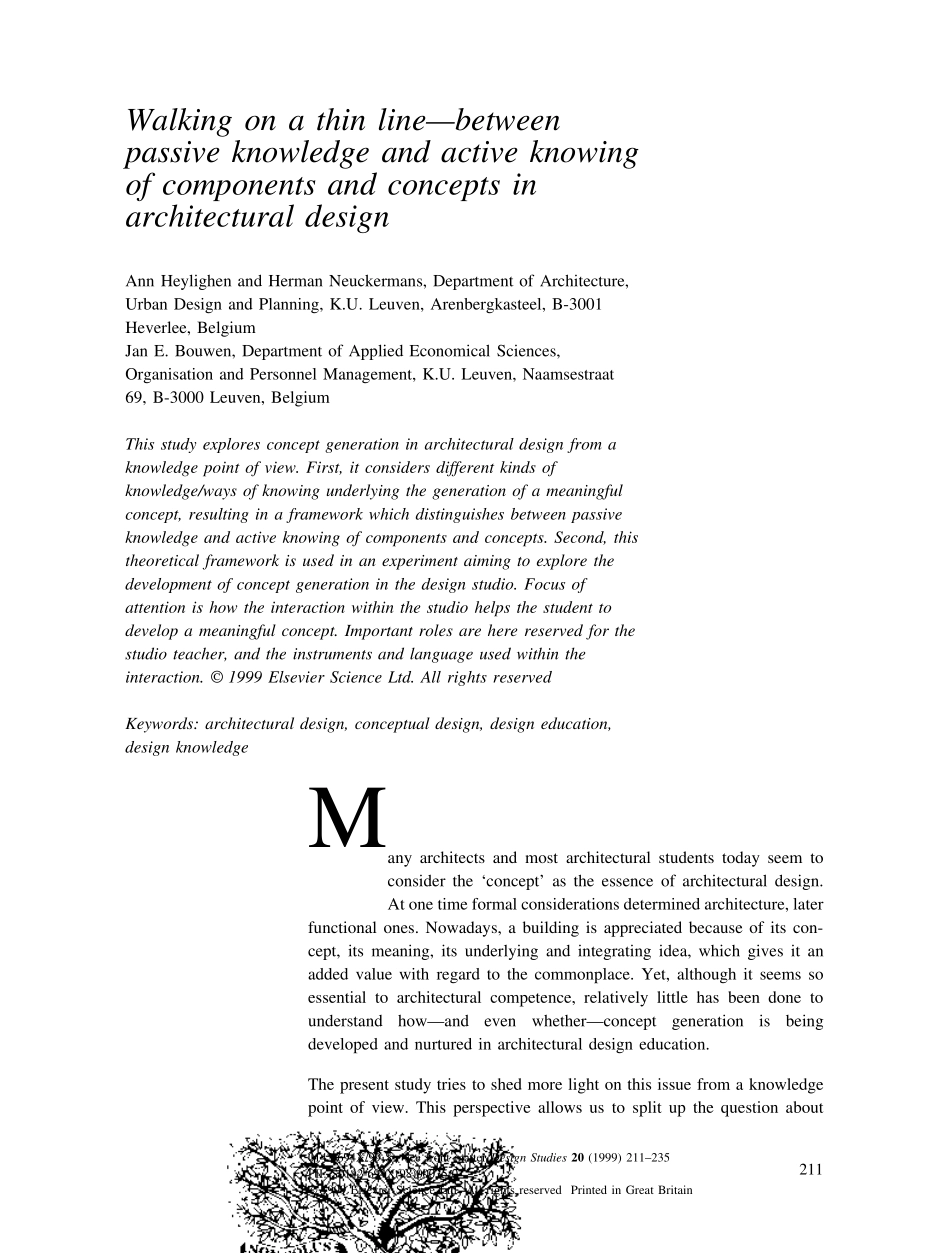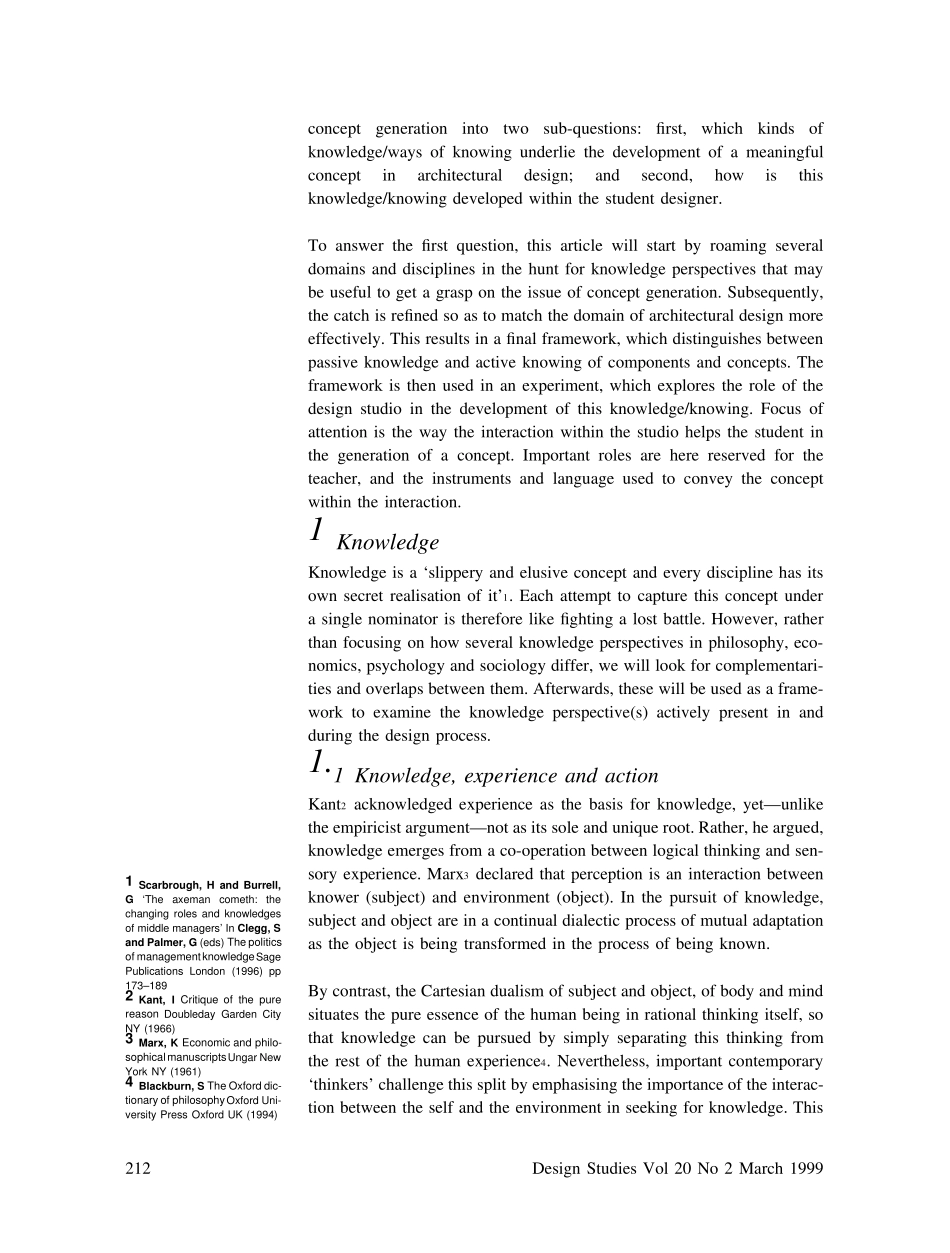Many architects and most architectural students today seem toconsider the ‘concept’ as the essence of architectural design.At one time formal considerations determined architecture, laterfunctional ones. Nowadays, a building is appreciated because of its con-cept, its meaning, its underlying and integrating idea, which gives it anadded value with regard to the commonplace. Yet, although it seems soessential to architectural competence, relatively little has been done tounderstandhow—andevenwhether—conceptgenerationisbeingdeveloped and nurtured in architectural design education.The present study tries to shed more light on this issue from a knowledgepoint of view. This perspective allows us to split up the question about0142-694X/99 $ - see front matter Design Studies 20 (1999) 211–235211PII: S0142-694X(98)00035-0© 1999 Elsevier Science Ltd All rights reserved Printed in Great BritainWalking on a thin line— betweenpassive knowledge and active knowingof components and concepts inarchitectural designAnn Heylighen and Herman Neuckermans, Department of Architecture,Urban Design and Planning, K.U. Leuven, Arenbergkasteel, B-3001Heverlee, BelgiumJan E. Bouwen, Department of Applied Economical Sciences,Organisation and Personnel Management, K.U. Leuven, Naamsestraat69, B-3000 Leuven, BelgiumThis study explores concept generation in architectural design from aknowledge point of view. First, it considers different kinds ofknowledge/ways of knowing underlying the generation of a meaningfulconcept, resulting in a framework which distinguishes between passiveknowledge and active knowing of components and concepts. Second, thistheoretical framework is used in an experiment aiming to explore thedevelopment of concept generation in the design studio. Fo...


